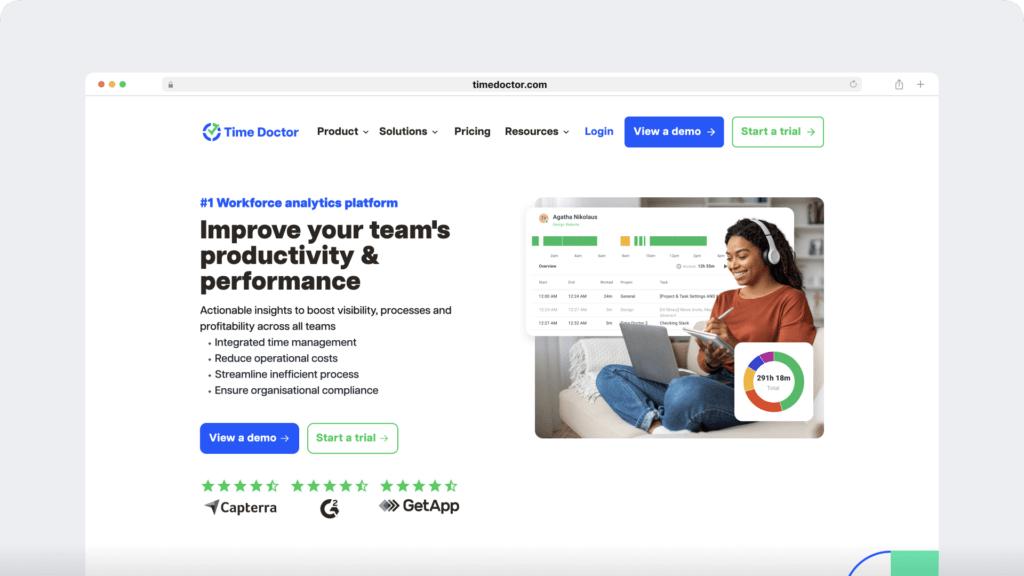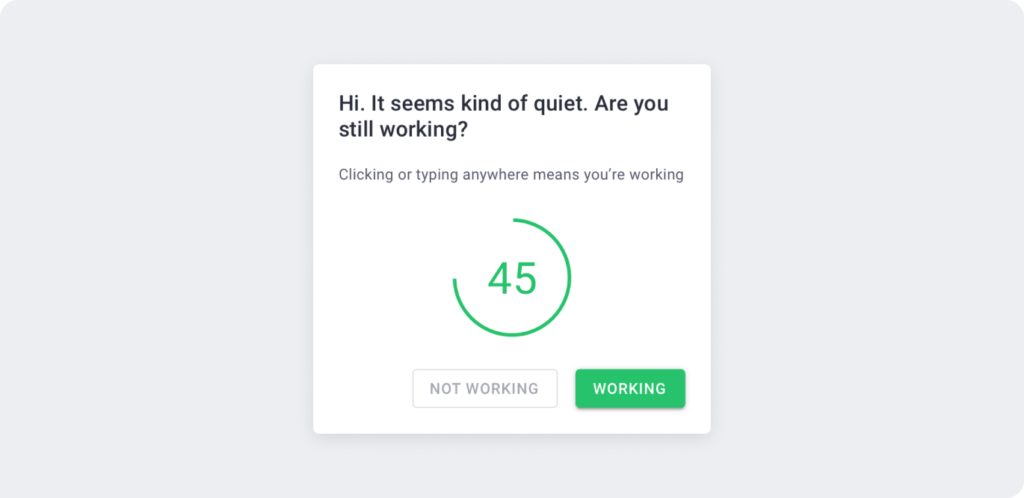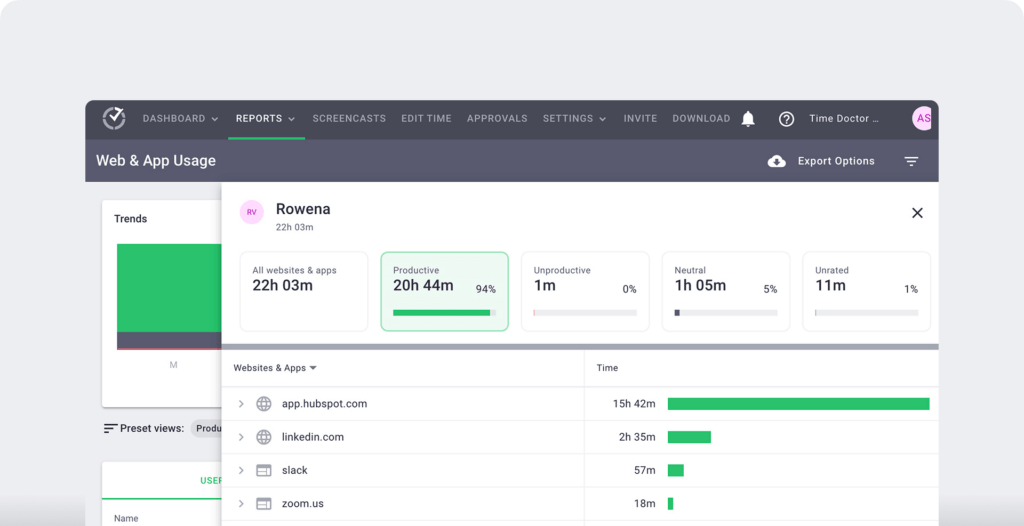With new variants of COVID-19 gripping the world, most people are still working from home. And many of us might continue to do so in the future as more companies adopt hybrid work models.
Sure, it’s a luxury not having to take long commutes to the office and working from the safety of your home during the ongoing pandemic. But sometimes you’ll find it hard to manage your time when working from home.
Fortunately, you can easily change that through some best practices related to time management working from home.
In this article, we’ll share 10 smart time management tips for a remote worker. We’ll also introduce you to an effective solution that’ll help improve your time management skills.
Table of Contents
- 10 smart tips for time management when working from home
- 5. Keep an eye out for distractions
- 6. Schedule breaks and use them wisely
- 7. Stay connected with your team
- 8. Manage your energy
- 9. Think long-term
- 10. Use the right time management tool
Let’s get started.
10 smart tips for time management when working from home
Before sharing the tips, it’s essential to understand why you might fail to manage your time well when working from home.
It’s because you are probably new to this work model and are not used to the challenges it presents. You may not even identify some of these challenges unless someone points them out.
So here are some challenges you might face when working from home:
- Risk of overworking: Office environments usually have fixed work timings that typically go for a toss in a work-from-home setting.
- A lot more distractions: Offices are designed to help people stay productive and have minimal distractions, which isn’t the case with our homes.
- A feeling of isolation: Many of us thrive in social settings and might not come to terms with the lack of in-person engagement when working remotely.
Find out eight common time management challenges and ways to beat them.
Now, let’s dive into the time management tips that will help you overcome these challenges:
1. Set aside a dedicated workspace
An effective time management tip is to designate a separate workspace at your home.
How does it help?
A dedicated physical space makes it easier to focus and switch into a work mode. The idea here is to make you feel like you are in an actual office and all ready for work.
Here are a few pointers on how you can make this home office space more conducive for work:
- Identify a quiet room or corner with good lighting.
- Organize it such that there are minimal distractions around it.
- Ensure that you have comfortable furniture to help you maintain a good posture during long working sessions.
- Add a personal touch to this space to make it more inviting.
If you find your home environment too distracting, you could opt for a shared working space in your locality.
2. Build a routine
It’s easy to lose track of time and work erratically when working at home. This could also disrupt your sleeping and diet patterns and make you unhealthy in the long run.
Building a consistent work routine helps you develop healthy habits and take control of your time.
A simple yet very effective routine is waking up and being at your work desk at a fixed time each morning. You could also opt to change out of your pajamas and put on some work clothes if it helps you stay in work mode.
3. Prioritize tasks and create a schedule
Creating a daily schedule is a vital time management practice, be it in an actual office or a home office.
And what makes a schedule more effective is adding priorities to each task. It’ll help you distinguish an important task from trivial ones and finish the work that matters the most.
Not only will it keep you stress-free throughout the workday, but it’ll also give you a sense of accomplishment.
You can opt for popular techniques like the Eisenhower Matrix or Pareto Principle to help you identify high-priority tasks.
And once you have a prioritized list of tasks, you can add them to your schedule using a simple calendar app or a to-do list.
However, you must be careful not to schedule more than one task for a time slot. While multitasking may seem like a good productivity hack, it’s actually counterproductive and could give you more stress.
Instead, use a technique such as time blocking, where you set aside a dedicated time slot for every task in your list.
Discover some effective strategies for time management in project management here.
4. Define boundaries
When working from home, the boundaries between your personal and professional lives tend to get blurred.
You could be tempted to attend a virtual meeting on your living room couch while performing daily chores. This sense of freedom is a great luxury, but it could affect your work and home life at some point.
So here’s a good time management tip to tackle the issue — set clear boundaries to segregate your professional and personal life.
And you must do that not just for yourself, but also for your team and family members. It’ll help set the right expectations from the onset and ensure that you enjoy a healthy work-life balance.
Let’s check out a few examples.
A. Personal boundaries
These are the set of rules that you set for yourself when working from home.
Here are some examples:
- Always work from your designated workspace.
- Determine your work hours and actively choose not to work longer hours regularly.
- Not tending to any personal commitments during work hours.
- Take up full ownership of your work and ensure nothing gets stalled because of you.
B. Team boundaries
These are the rules that will define how you engage with your team:
- Let your team know about your work timings and that you’ll turn off work notifications beyond those hours.
- Politely tell them that you won’t receive work-related phone calls post your working hours.
C. Boundaries with family members
At times, your loved ones could be a big distraction when working from home.
Here are a few ways you can minimize these distractions:
- Tell your family about your work hours and request them not to disturb you at these times.
- If you have another family member(s) working from home, sync your calendars to know each other’s schedules.
- If you have kids at home, be proactive and inform your family about your meeting times. They can help prevent kids from crashing your virtual meetings.
5. Keep an eye out for distractions
Once you have set clear expectations with your team and family, it’s time to watch out for other stealthy work-time distractions, such as social media.
It’s easy to spend your work hours on sites like Linkedin and Facebook and pass it off as work for professional development. While it’s important to network and upskill yourself, you must set aside time for them outside of your working hour.
To see your actual unproductive time during the day, you can use an advanced software tool to track time and monitor your computer activity. You’ll be surprised by the time you could save by avoiding some websites during work hours.
Also, keeping your workspace organized and clutter-free can help you stay more focused and productive.
6. Schedule breaks and use them wisely
People look forward to a water-cooler or lunch break in an office setting. After all, these breaks help them reset and get ready for the next work cycle.
Studies show that taking regular breaks helps you achieve maximum productivity during each work cycle.
However, you may notice that you aren’t taking enough breaks when working from home.
It could be because you’re already in a comfortable environment and don’t feel the need for a break or miss the physical company of your colleagues. And even if you are taking a break, it’s mostly about leaving one screen and looking at another.
So, it’s a good practice to schedule your breaks in advance and use them well.
And instead of grabbing your phone, you could take a brisk walk outside, prepare yourself a healthy snack, or simply have a good time with your kids. Your eyes will thank you for giving them a break from screen time.
7. Stay connected with your team
Time management is deeply connected with our mental health. And as social beings, human interaction is vital for our mental well-being.
But at times, remote work can make you feel isolated and throw you off your work schedule.
To avoid such scenarios, try to stay connected with your team as much as possible. Besides, it’ll help you prevent any task delays due to inadequate communication.
You can organize informal zoom meetings to engage more freely with your colleagues. Share your thoughts, work hour expectations, and grievances with them.
This will instill a sense of belonging and make you feel a part of the larger community.
8. Manage your energy
Work from home burnout is real and affects many remote workers.
To overcome this and ensure maximum productivity, you should manage your energy such that you don’t burn yourself out before the end of the day.
This way, you’ll be able to achieve all your personal and professional goals without feeling exhausted.
Sounds great! So how do you do it?
Here are a few excellent tips:
- Identify your peak productivity hours – the time when you feel most energetic and productive. Use this time for high-priority work.
- Stay hydrated and take a healthy diet.
- Avoid quick energy fixes like caffeine. Instead, opt for physical exercise to get that energy rush.
- Practice mindfulness.
9. Think long-term
Sometimes changing your perspective can help you break out of unwanted patterns.
As more companies adopt remote or hybrid work models, work from home seems set to stay for some time to come.
So it’s essential to accept the situation and figure out ways to make the most of it. Look out for ways to learn and grow in a home office environment and embrace technologies that can help you do that.
Above all, be kind and patient with yourself and understand that time management when working from home isn’t rocket science. You just need to do some groundwork, and it’ll soon become second nature.
10. Use the right time management tool
A simple and effective way to take control of your time is using the right software tools. You may already be using a lot of remote collaboration tools like Zoom, Slack, etc.
Similarly, you should also consider using effective time management software. These tools may include a time tracker, task and project manager, productivity tracker, etc.
That’s a lot of tools, right?
What if there’s a software solution that can do all that and more, all from a single app?
Manage your time like a pro using Time Doctor

Time Doctor is an excellent time and productivity management tool used by large and small businesses to boost the efficiency of their on-site and remote team. And it’s equally effective for freelancers working from their home office.
Let’s check out some of the key Time Doctor features:
1. Flexible time tracking
Time Doctor has a manual timer that lets a remote employee track time for different tasks using a start/stop timer. This gives you better control over how and when you track your work.

For greater flexibility, Time Doctor also features automatic time tracking. Here the timer starts as the system turns on and runs in the background so you can focus on your tasks.
2. Distraction and idle time alerts
Time Doctors helps you and your team stay focused on work with idle time and distraction alerts functionality.

These alerts pop up on the screen when the user is idle (no keyboard and mouse activity) for a specific time period. Admins and managers can specify the exact time after which the alert should appear.
Note: Time Doctor is not a keylogger. It only checks if the keys are in use.
Moreover, admins can use the ‘Productivity Ratings’ feature to specify which apps and websites are productive and which aren’t.
3. Productivity reports
With Time Doctor, you can see detailed productivity reports, such as:
- Projects and tasks report: View the time spent on various projects and individual tasks.
- Activity summary report: Shows a detailed account of user activity (in seconds and minutes).
- Hours tracked report: View the total hours a user has tracked during a specific date range.
- Timeline report: Check the time an employee spends on tasks and breaks through daily or weekly reports.
- Web and app usage report: Shows the time a user spends on different apps and websites.

4. Powerful Chrome integration
Time Doctor can easily integrate with over 60 popular business tools like Asana, Jira, Slack through its Chrome extension.
The extension allows you to use powerful time tracking functionality directly from the third-party tool’s interface, saving you the hassle of switching apps.
Find out more ways Time Doctor can improve your time management skills.
Wrapping up
A remote job offers many benefits – a flexible work schedule, fewer commutes, more time with family, and a lot of freedom.
But don’t let poor time management play spoilsport and outweigh its benefits.
Use the time management tips shared above and a good time tracking app like Time Doctor to stay ahead of your schedule and make your remote job a success story.
So why not sign up for Time Doctor’s free trial to get started today?

Vaishali Badgujar is a seasoned Content and SEO specialist who provides ROI-focused managed SEO services. She is dedicated to helping businesses connect with their audience online and see real growth through her work.


